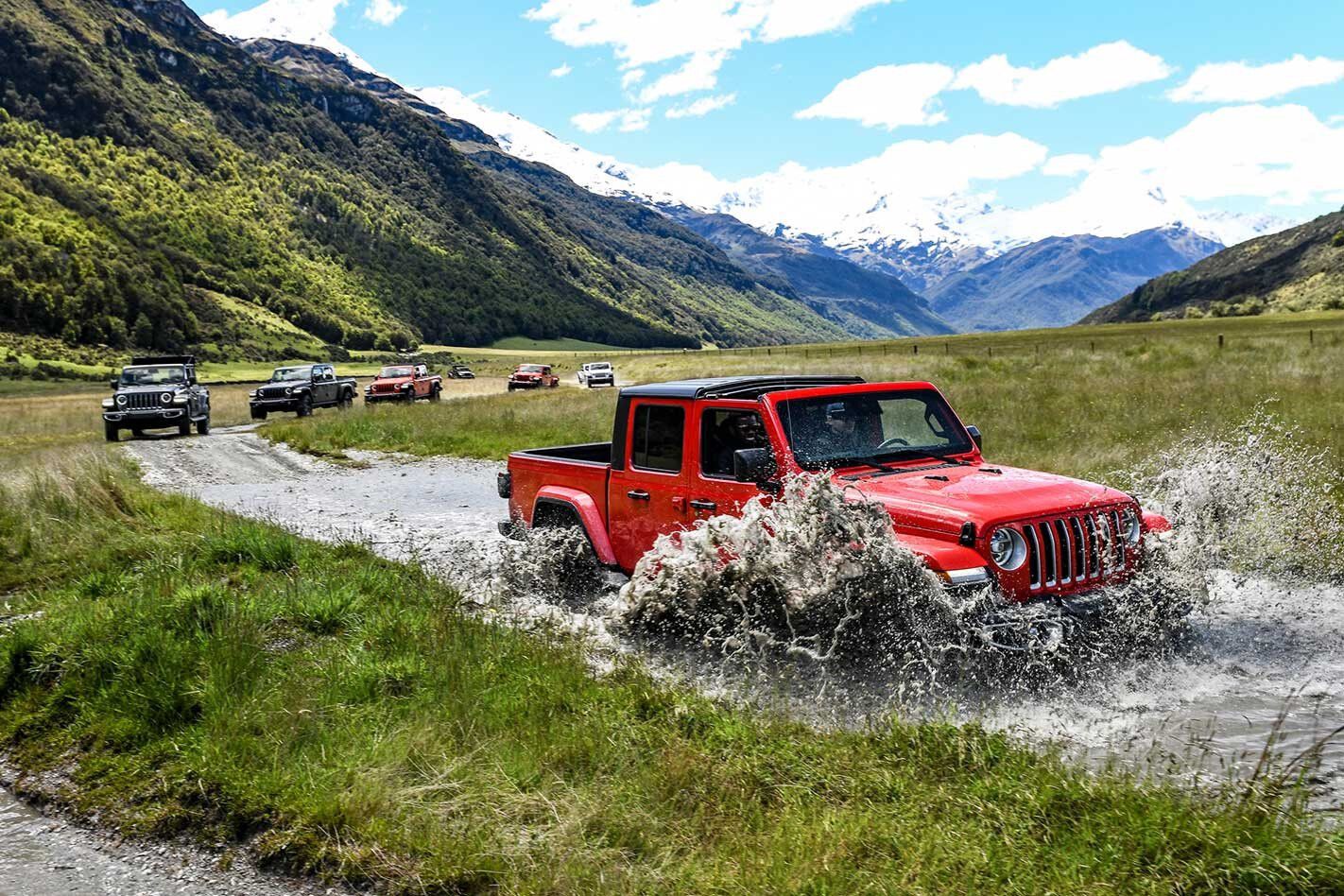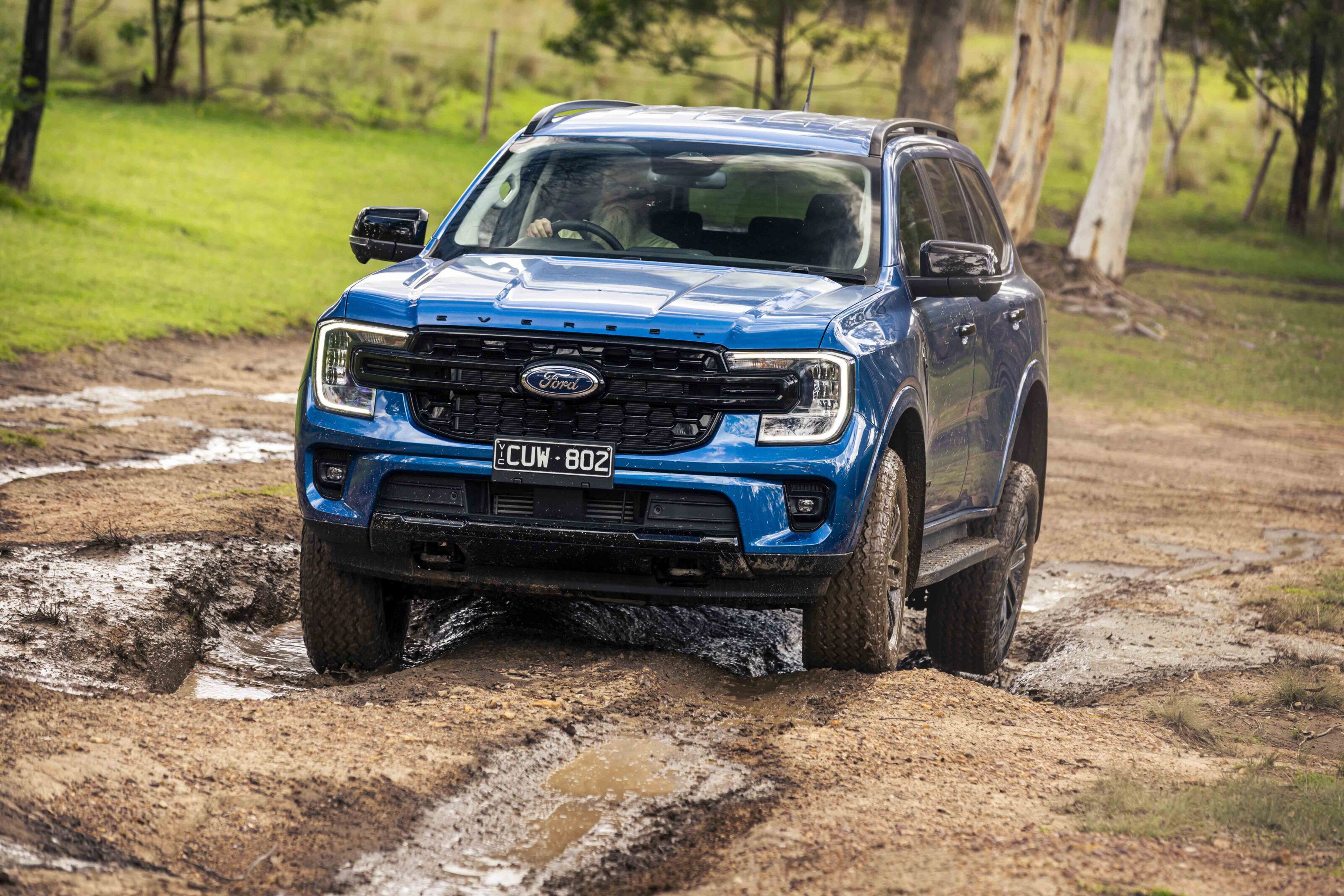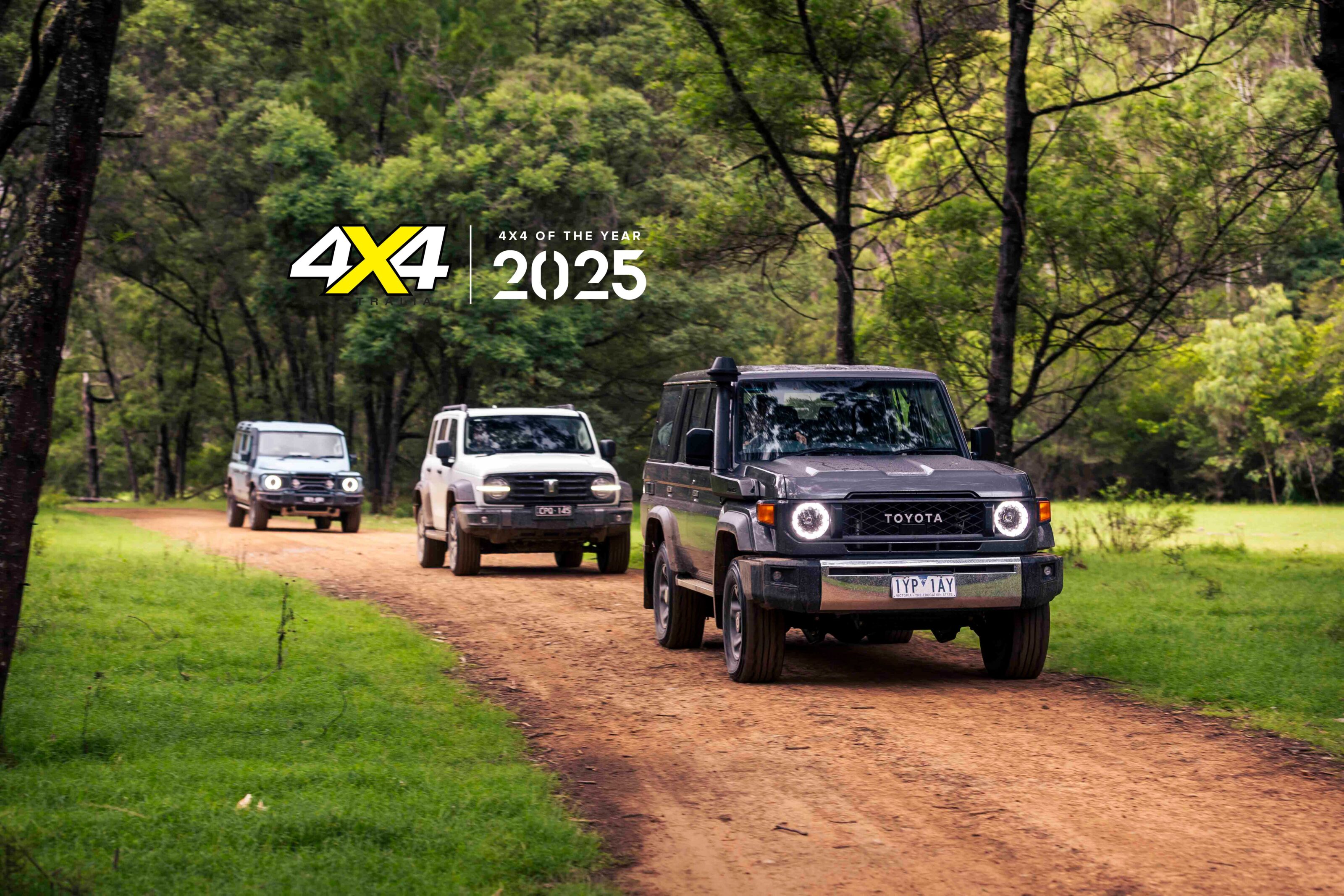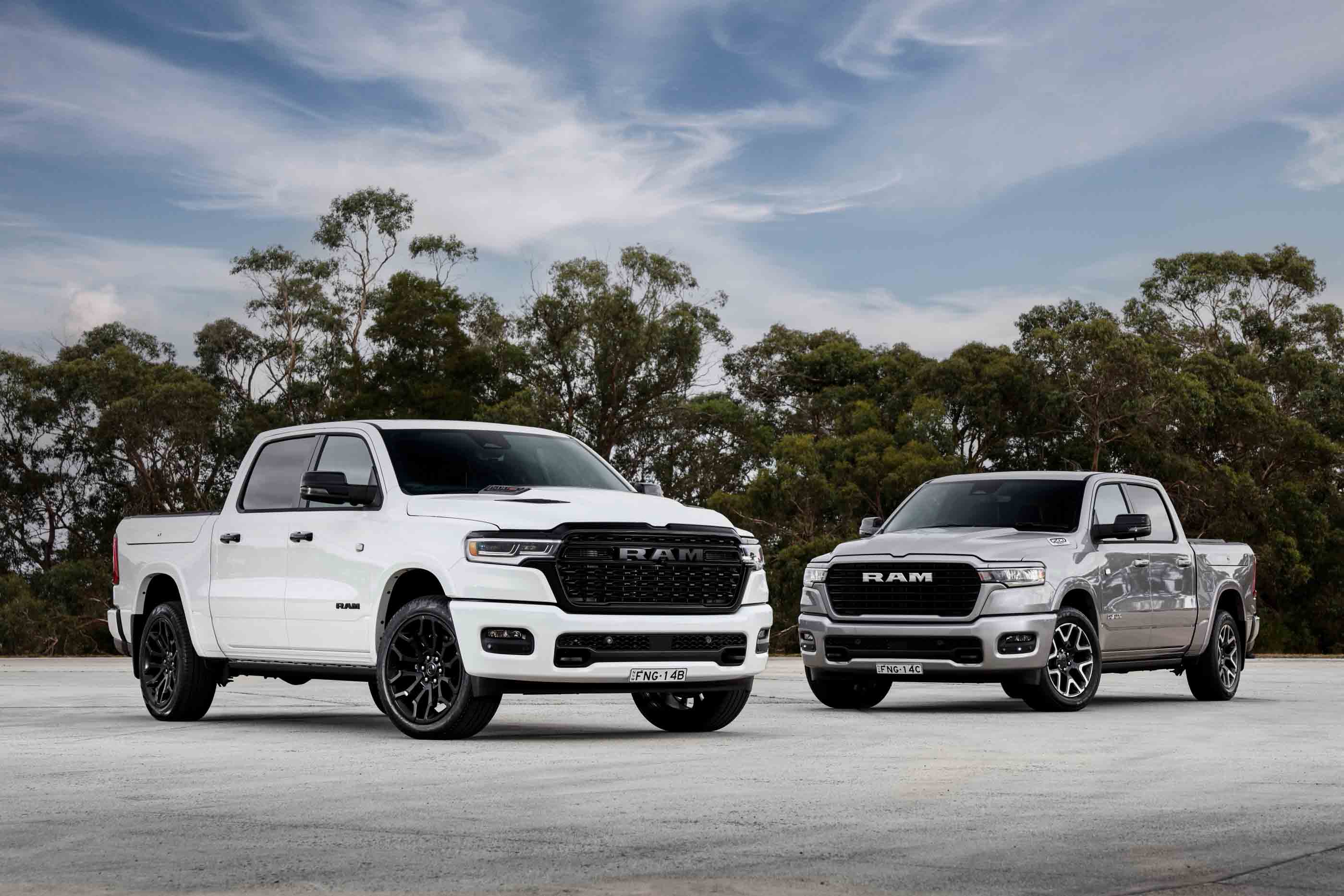The Jeep Gladiator pick-up lands in Australian dealers midyear, but to give us a taste of what is to come Jeep shipped a handful of the muscular trucks to New Zealand’s South Island to see how they drive. While we did get a quick blast in a Gladiator Rubicon in the Nevada desert last year, it was great to spend a few more days with this much-anticipated model in extremely different terrain.
While the day in the desert was dry and sandy, the area around Queenstown copped a dumping of rain around the time of our arrival and many areas were flooded to the point that the planned drive route had to be altered; the group of Americans who were flown in a few days before us couldn’t even get to the remote campsite Jeep had established. Wild, flowing rivers prevented vehicular access and the campsite would have been a soggy mess. Lucky for us, the rain slowed on our arrival and we enjoyed a fantastic drive through the scenic countryside.
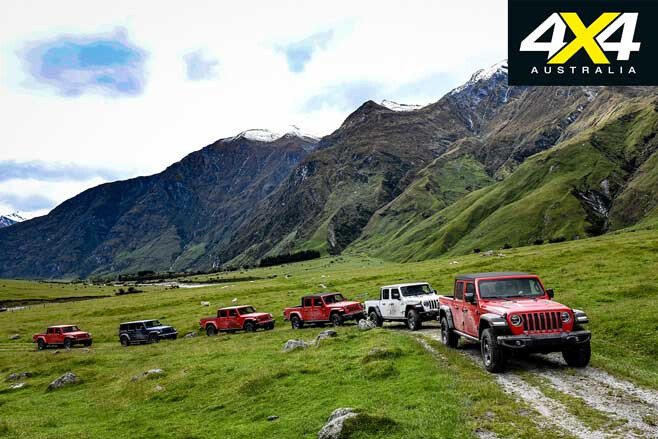
The vehicles on offer were American-spec Gladiator Rubicon models, so they were equipped with Jeep’s full arsenal of off-road weaponry. This includes Dana 44 live axles (front and rear) fitted with extra-low 4.1:1 gears and locking centres, plus 4.1s in the transfer case for extra-low crawling ratios; a disconnecting front swaybar; and 33-inch off-road tyres and suspension. Some of the vehicles were fitted with extra Mopar accessories including 35-inch tyres, taller springs and Fox shocks … one rig even had tube doors.
As with the Aussie-spec JL Wrangler, we will get an ‘international-spec’ JT Gladiator, which means the transfer case will offer 2WD, full-time 4×4, and 4×4 locked high and low range. Smaller 255/75R17 tyres are likely to replace the 33s and, much to the dismay of off-road enthusiasts, those 35s will not be offered as a factory option.
Full local specification and pricing is yet to be revealed, but we can tell you that when it lands here the JT will come in two model variants – Overland and Rubicon – and will be powered exclusively by the 213kW/353Nm 3.6-litre Pentastar V6 backed by the eight-speed ZF transmission. No manual transmission option and no diesel engine option (for now). This powertrain is backed by either a Command-Trac transfer case in the Overland specification, or the 4.1:1-geared RockTrac T-case in the Rubicon Gladiator.
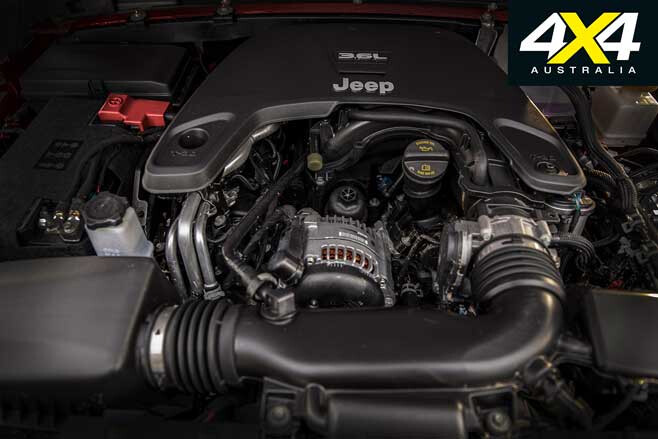
When quizzed on diesel engine options, Jeep officials were very quiet as to whether we’d get the 2.2-litre four-cylinder diesel available in the Wrangler Rubicon or the 3.0-litre V6 diesel the US market gets in its Wrangler, or if we’d get a diesel Gladiator at all. In a double-cab 4×4 ute market that is dominated by diesel engines it seems crazy not to offer one in Australia, but we’ll have to wait for news on that front.
Jeep may choose to not fit a diesel engine to the Gladiator at all, preferring to rely on its ‘4xe’ plug-in hybrid powertrain that was recently unveiled in Wrangler guise. This comes as part of the brand’s aim to be “the greenest SUV brand” and to offer electrified options on all of its models by 2022.
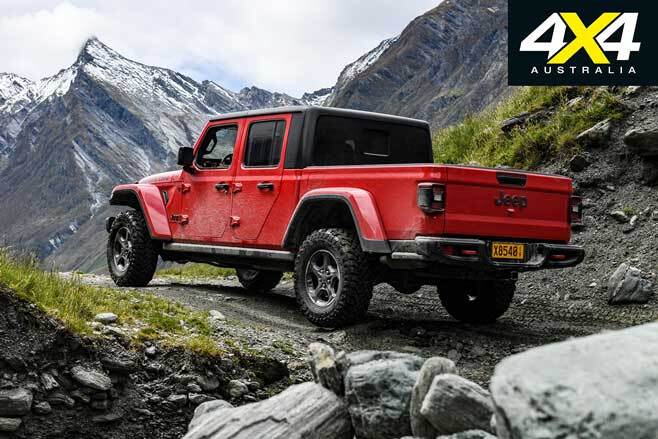
So, without knowing exactly what specification we’ll get or how much it will cost, how does the Gladiator drive? Queenstown bills itself as the adventure capital of the world and this, combined with inclement weather conditions, provided the perfect environment to test the Gladiator. Despite the conditions and against all sensibility, we chose to drive the Mopar-equipped model with Fox shocks, 35s and tube doors.
If you’ve ever driven a JL Wrangler you’ll be at home behind the wheel of the JT Gladiator; the view over the bonnet and the layout of the controls, audio and HVAC are identical between the two siblings. As is the sound, feel and performance of the V6 petrol engine and eight-speed slush ’box. It’s an engine that likes to rev to maximise performance, and it really rewards the driver when you get stuck into it. While this isn’t ideal for low speed off-road driving, it adds to the fun factor of driving the Jeep on open roads, sealed or otherwise.

As expected, the Mopar tube doors do nothing to keep out the cold, but the Rubicon’s heated front seats were well-appreciated. Surprisingly the doors let in very little water, be it from the rain, creek crossings or muddy bog holes; although, it’s irrelevant to Australian buyers as they don’t meet ADR standards. We’ll have to be content with the Gladiator’s removable roof sections for the feel of open-air motoring.
Yes, just like the Wrangler, the Gladiator’s entire roof is removable, or you can simply remove the front sections to let the sun shine in. In a market crowded with same-same double-cab utes, the JT is the only one to offer a removable top.
The Gladiator’s rear seat is fairly upright like many others in this class of vehicle, but it still offers heaps of head and leg room for adult passengers, and they sit high to get a great view outside the car.
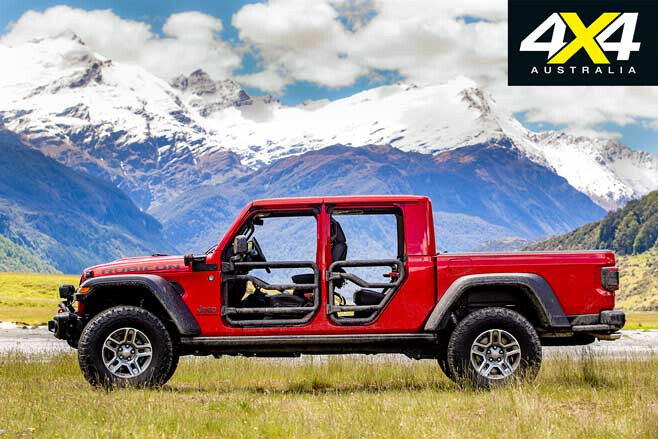
Mopar kit that was really appreciated on this Jeep includes the 35-inch muddies and Fox shocks but, again, they probably won’t be for Australian-market vehicles. We did speak with Mark Bosanac, head of Mopar parts and service, and he expressed his ongoing frustration with Australia’s modified vehicle regulations and state-by-state rules, but said he was hoping to find a working solution sometime in the future that would allow Mopar to offer factory-backed lifted suspension kits.
With the 50mm-raised Mopar suspension and taller 35-inch rubber, the Mopar-equipped Gladiator crawled across rocky rivers without touching down, while the stock-height models bumped and scraped their way through.
Like the Wrangler Rubicon, the Gladiator Rubicons have solid rock sliders running down their flanks to protect the sills against rock rash. Additionally, JT Rubis also have rock rails under the trailing edges of the cargo tub to protect the tub on departures. We did bump these on a non-Mopar-equipped JT on a particularly rocky descent, but their solid construction did the job of protecting the sheetmetal.
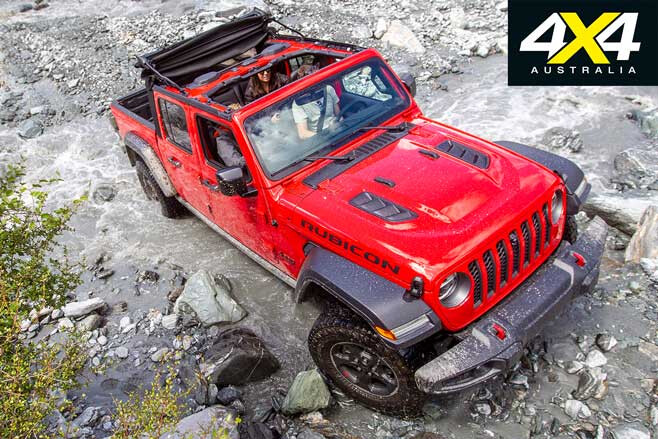
On the more open gravel roads the extra wheelbase of the JT Gladiator gives the truck a more planted and stable feel on the terrain than its wagon sibling, which also improves the ride quality on rougher ground.
The Fox shocks fitted to some of the vehicles delivered a notably more controlled ride and handling. The steering is still light and vague in places, typical of Jeep’s off-roaders, but it keeps the driver on his or her toes. The long 3487mm wheelbase didn’t give any notable troubles in terms of turning circle on the tighter rocky tracks.
Performance-wise, the Pentastar V6 still delivers its best when revved hard and lacks a little down low. Thankfully the extra-low gearing in the transfer case and final drive reduces that lack of low-down grunt when driving off-road, but it’s still nothing like the torque of a diesel engine, or an EV motor for that matter.
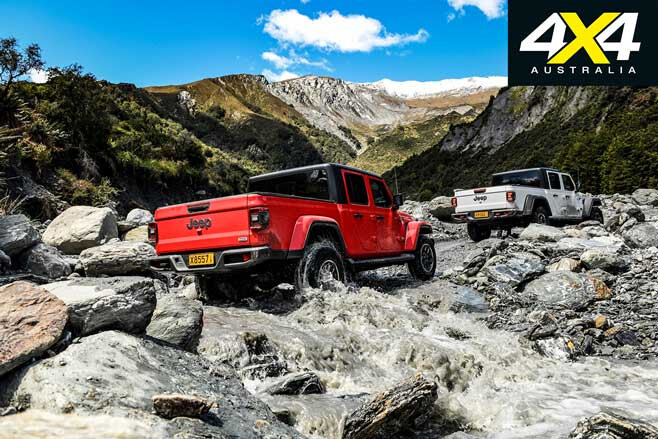
Should Jeep not offer a diesel variant, the lack of engine options could be a decisive factor to the success of the JT Gladiator. Whether you’re considering the JT for recreational touring, a work truck or off-road use, diesel is what most Australian buyers want. This is why almost every other double-cab 4×4 ute comes in diesel; certainly the ones that sell well.
Other factors will be load capacity and price. The international-spec JT Rubicon is rated to tow 2721kg and has a payload of just 620kg, both figures well short of the competition. We’ll have to wait until closer to its midyear launch for a definitive figure on what it will cost you, but our tip is you won’t be getting much change, if any at all, from $75K, to put yourself in a Gladiator Rubicon.


